If you are just starting out with recording at home, you may wish to start out with a beginner-friendly microphone that doesn’t blow your budget.
In this review, we feature the best beginner microphones for recording vocals and music instruments. These microphones are easy to use, light on budget and can be setup with the standard XLR input to your audio interface.
While most of the time large diaphragm condenser mics are the preferred option for serious home musicians due to their ability to capture high-end detail, dynamic mics are also a good option for beginners as they are more durable and budget friendly.
The Two Main ‘Types of Microphones
Broadly speaking, you can classify most of the microphones that you will be working with in your home studio (or professional studio) as follows:
1. Condenser Mics
- Further subdivided into “large diaphragm condensers” and “small diaphragm condensers”
2. Dynamic Mics
These two categories of mics will form 99% of the mics you will ever use (with the exception the ribbon mic, which you don’t have to worry about at the beginner stage).
Condenser vs Dynamic Explained
Generally speaking, condensers and dynamics are used recording different types of music sources, for example:
Condenser Mics
- Vocals
- Acoustic Guitar
- Stringed Instruments
- Piano
Dynamic Mics
- Drums
- Electric guitar
- Bass Cabinets
Although the general rule of thumb is that condenser mics should be used for vocals, dynamic mics also work reasonably well if you are just starting out and testing things.
It isn’t true to say that condensers are the best type of microphone to start out with – it all depends on what kind of music you are recording – for example if you record loud vocals or heavy metal, dynamic mics would be your first choice.
I would actually recommend that you try using both types of microphones so that you can learn how your voice sounds on each type of mic and how you can tailor your music genre with the microphone that you intend to use.
For more on the types of microphones to use, check out this post:
The Best Microphone for Beginners
1. Shure SM58-LC Dynamic Mic
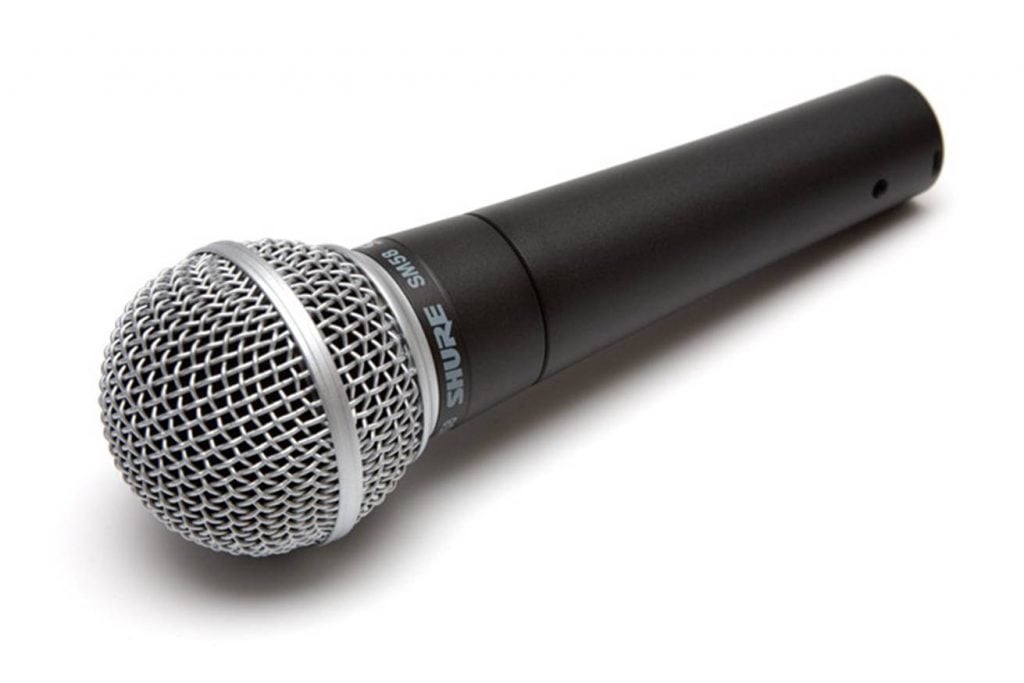
Long considered the “ultimate” beginner microphone by the music industry…
The Shure SM58-LC is THE mic to get if you are a beginner just starting out with your recording studio.
In fact, this has been the go to microphone for home musicians since the 1950s…it is simply the most iconic mic that you’ll ever use.
The dynamic range on the SM58 really sets it apart from the rest of the pack – it doesn’t sound too bright, nor does it sound too dark. It captures the full range of sound while maintaining harmonic balance in the vocals.
That said, these mics are extremely durable and rugged. You can drop them, spill liquid on them (I’m not suggesting that you do) and they’ll still last for a long time.
Shure tried to “improve” on the SM58 with the SM58-beta, but we found that these mics are way too bright for recordings. Instead, stick to the SM58-LCs and you’ll be go to go.
The mic has a wide frequency response tailored for vocals, with good midrange and bass-rolloff to control the proximity effect. It has a nice frequency response from 50 to 15 kHz which captures not only vocals but instruments such as acoustic guitar as well.
The SM58 has a uniform cardioid pickup pattern which means that it will reject off-axis background noises, keeping your recordings clear – which is what you want.
For beginners, the Shure SM58 is THE go to mic. Check them out here:
Up next…
2. Shure PGA48-XLR Mic
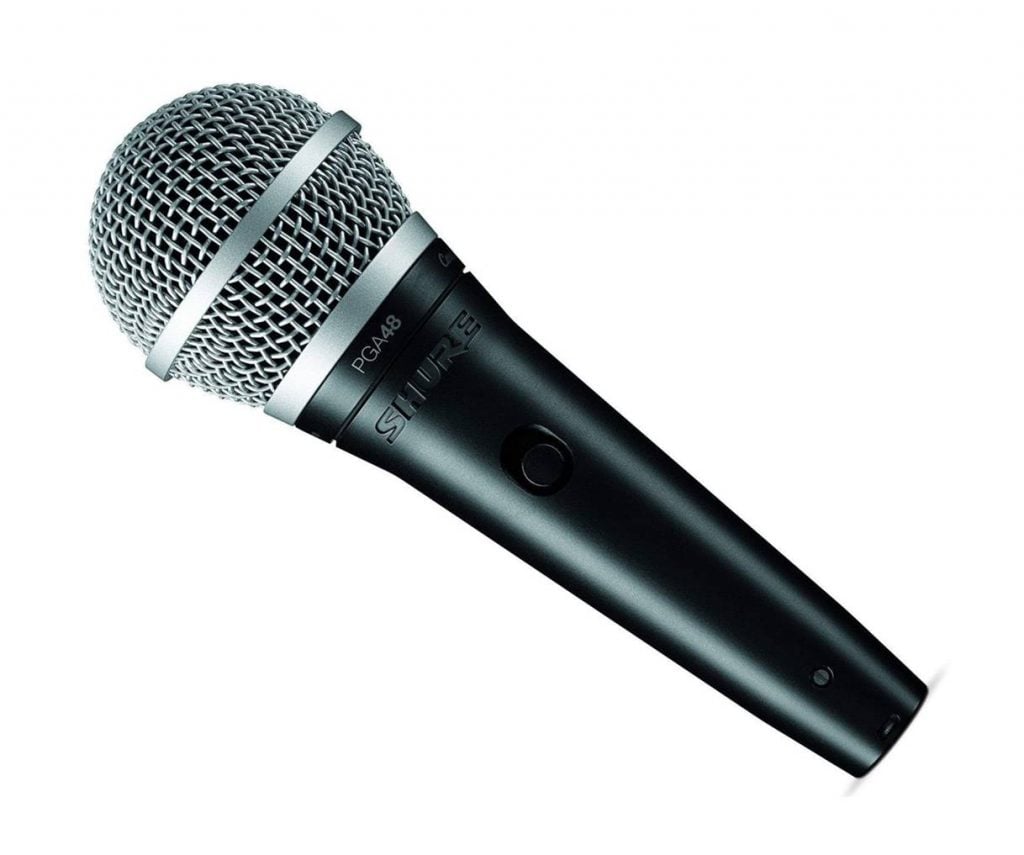
One of the most budget-friendly options for beginners…
The Shure PGA48-XLR is a tried and tested option that delivers really clear sound with a very low noise floor. It has a smooth black metallic finish with a classic silver ball grille at the top.
The mic has a cardioid polar pattern which picks up audio from the source while rejecting off-axis unwanted noise.
One thing I like about this mic is that it can really bring out the finer details in your voice and capture the high-end well, despite it being a fully dynamic mic.
Furthermore, the mic has a very sleek, professional feel to it and feels solid and durable.
That said, this mic comes with the XLR version and the 1/4” version, so be sure you know which one works with your audio interface.
If you are tight on a budget, this is a great option for your recording studio.
Check them out here:
Up next…
3. Audio Technica AT2020 Condenser Mic
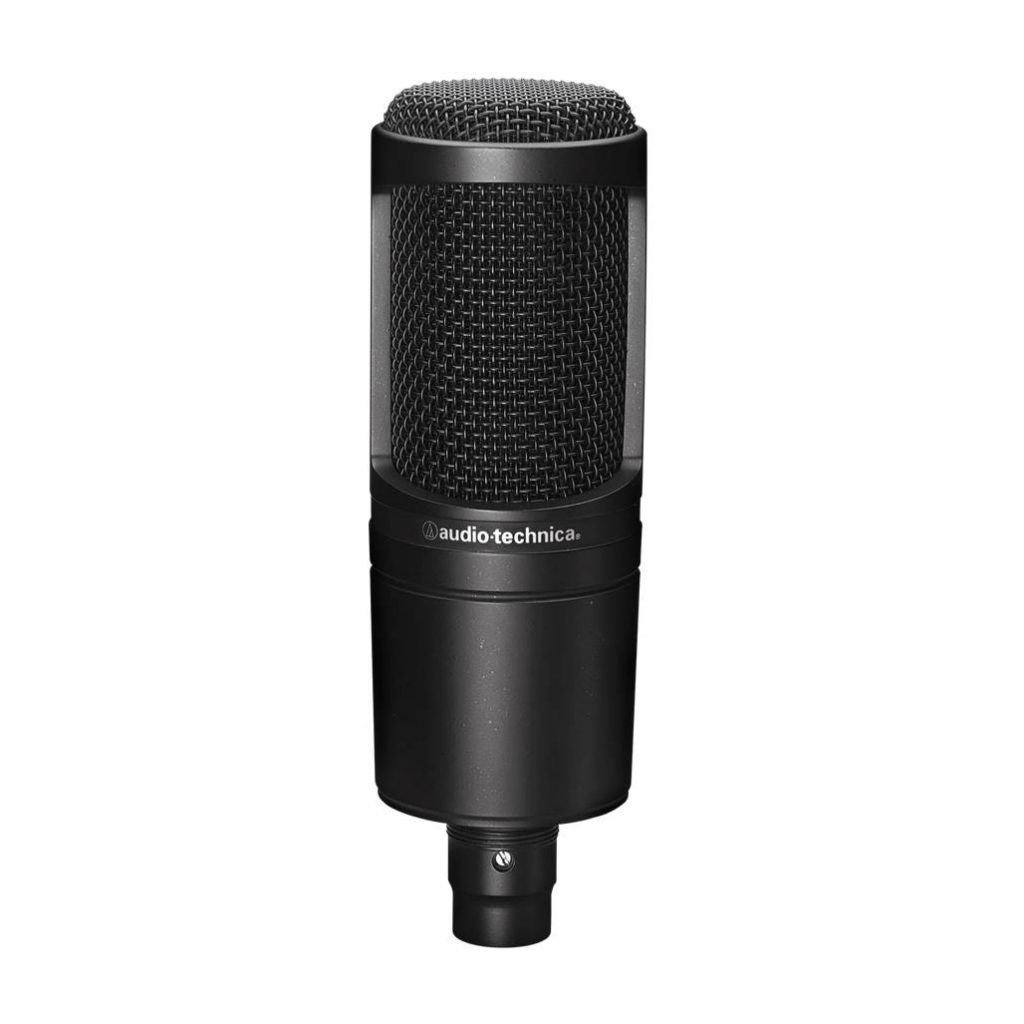
Another decent recording studio microphone that’s available on a budget, the Audio Technica AT2020 has been a classic favorite among home recordists for quite some time.
And for good reason…
It’s basically an all-round working glass condenser mic which is decently priced and has great sound reproduction.
While this may sound rather “boring”, it’s actually a tried and tested option based on how many musicians I know that use this mic on a daily basis.
The budget-friendly price range makes it ideal for home recording studio applications; it has high SPL handling and a wide dynamic range with very good versatility.
The AT2020 also features a cardioid polar pattern which picks up sounds from the sides and rear of the mic, while rejecting off-axis sounds.
I like the AT2020 for its custom low mass diaphragm which provides extra frequency response and better transient response for recording vocals.
If your voice is bright, you’ll love how this mike captures the high-end detail and subtle nuances for your voice without any noise floor problems.
Check them out here:
Up next…
4. AKG P120 Condenser Mic
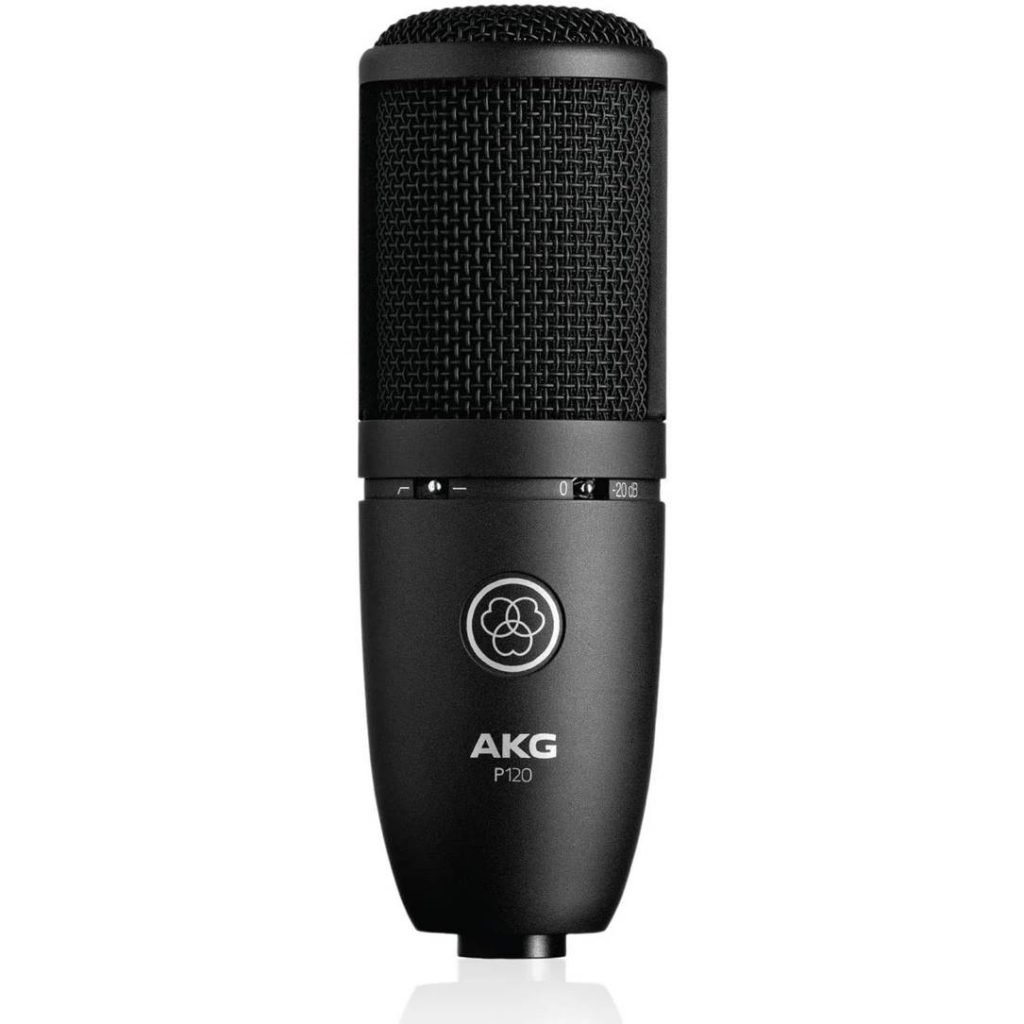
AKG has been around for more than 70 years, and the P120 is one of their flagship microphone models…
This mic is great for beginners because of its budget-friendly price point and ease of use. It also has a low-mass diaphragm which delivers accurate sonic detail for vocals and capturing high-end instruments such as acoustic guitar.
In my opinion, this microphone is a great all-round general purpose microphone – the vocals feel warm and clear, and acoustic guitar and instruments have good clarity without sounding too harsh.
You can even use it on your drums and bass amp (although a dynamic would be better suited), but works well anyways.
As long as you have a decent audio interface with a good preamp, the AKG P120 works wonders and delivers really crystal clear sound.
All in all, it’s difficult to find another microphone at this entry-level price point that can deliver the same value and quality that you’d expect in a vocal condenser mic.
Check them out here:
Up next…
5. CAD Audio GXL2200 Condenser Mic
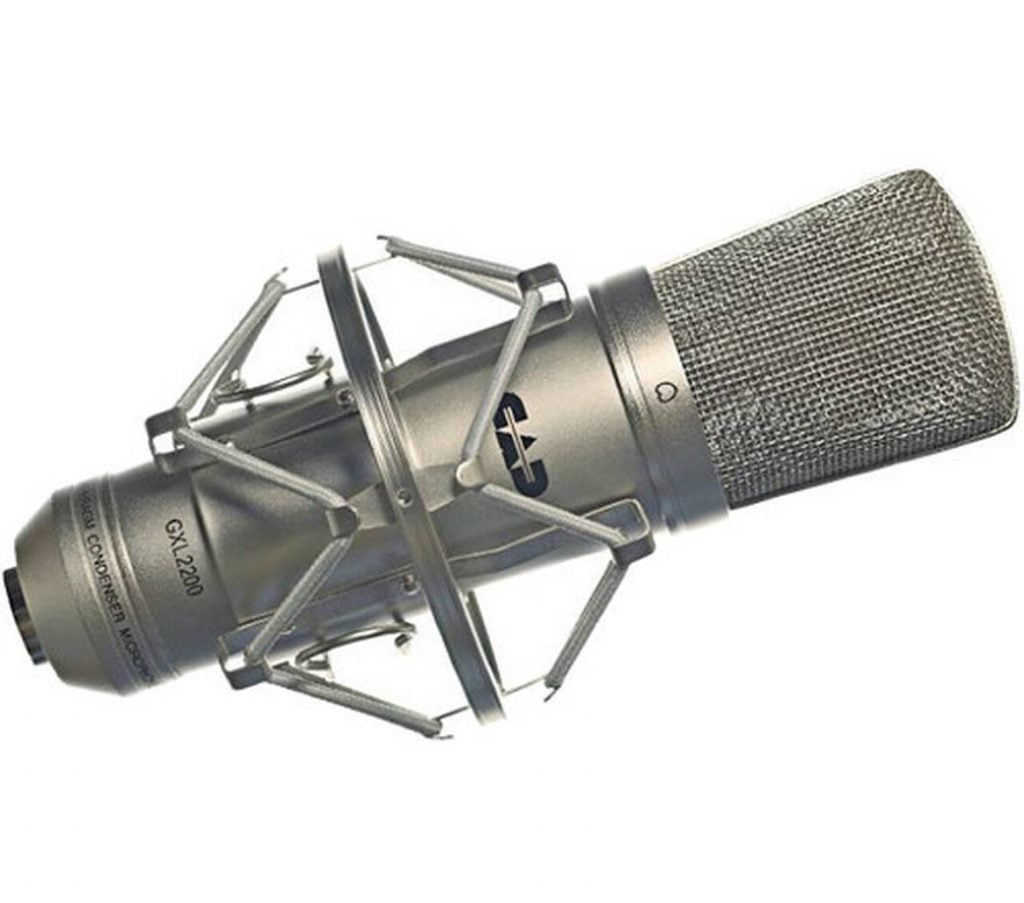
If you are looking for something more “high-end” but still budget-friendly, the CAD Audio GXL2200 is an absolutely great choice.
As a professional musician, you’ll almost always see expensive microphones in the recording studio range between $5000 and $10,000. The quality of these microphones is always really good, but they are THAT good because of the price.
Not so with the CAD Audio GXL2200…
The range, clarity and warmth of this mic is nearly (well almost) on par with high-end mics like Neumann or Sennheiser in the $500 range – giving you really good detail and sonic range. It also works well with acoustic guitar and other stringed instruments with very crisp high-end detail reproduction.
Using the GLX2200 feels like you are using a high-end mic in your own recording studio.
The mic has a very study buld quality and comes with a shock-mount.
Overall, the CAD GXL2200 performs way above its price point – and you are definitely getting a quality condenser mic here for recording vocals.
It’s definitely a great condenser mic for beginners considering for home recording.
Check them out here:
Up next…
6. Sennheiser E 845-S Dynamic Mic
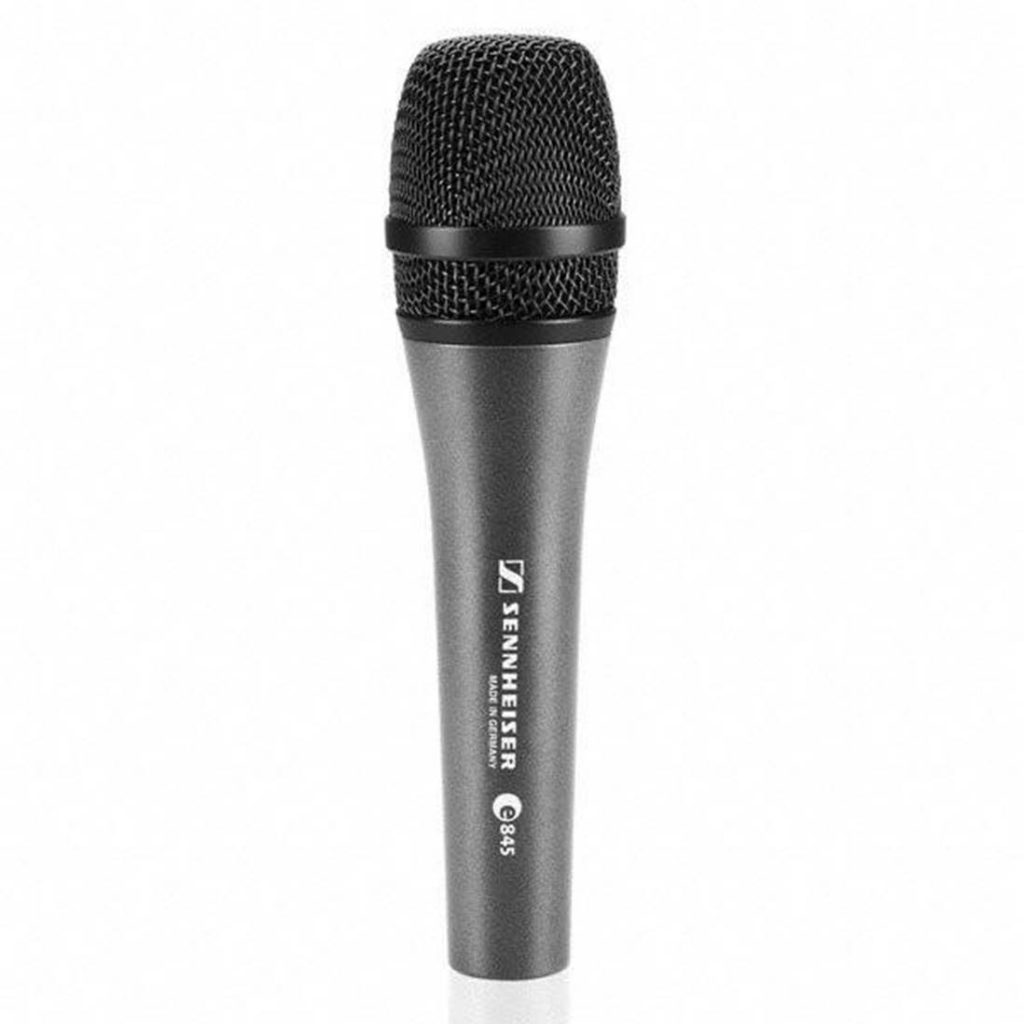
Another great option for beginners…
The Sennheiser E 745-S is a dynamic super cardioid mic that works for capturing smooth tonal responses and vocals generally.
What I like about this mic is that it has full dynamic range with a presence lift for vocal clarity and projection, together with a consistent on/off axis and proximity response to maintain quality.
The mic feels sturdy and durable like a true dynamic – it has a full metal construction and shock mounting which minimizes noise and interference.
This mic makes your voice sound very smooth and cuts right through all the instrumental noise. This makes lower notes clear and upper notes sound much fuller and less tinny.
This Sennheiser microphone does make a difference especially if you are focusing heavily on vocal recordings.
It’s a great beginner-friendly option as well, due to its value price point.
Check them out here:
Up next…
7. Shure BETA 87A Condenser Mic
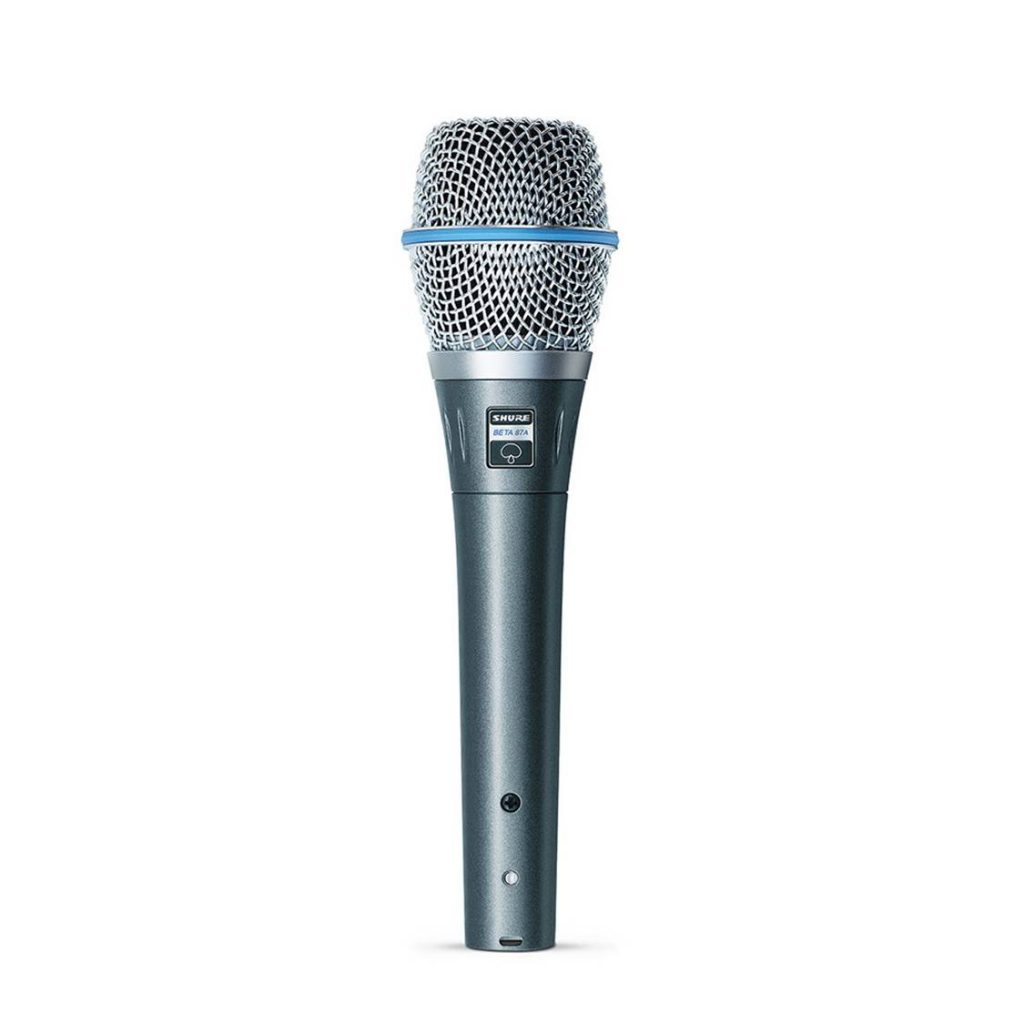
Spend enough time with audio industry professionals and you’ll inevitably get asked the question “what is your go to microphone?”…
And the answer would almost certainly be either the Shure SM57 or the Shure BETA 87A.
As compared to the Shure SM57, the BETA 87A is designed primarily for on-stage live performances.
It has the ability to capture brighter vocals with sparkling accuracy to bring the “crisp” element to the forefront of your recordings.
In other words, this mic is a stunning live vocal mic; it is equally impressive recording everything from acoustic guitars to hand percussions.
The output on this mic is very accurate and the noise rejection is excellent – although you would have to get close to this mic while singing and recording.
The supercardioid pattern gives really good feedback rejection on stages, although it works equally well in a home recording setting if you are recording in a noisy environment.
This is one of the best mics to work with on-stage or to record vocals at home. It’s budget-friendly price point makes it a great beginners option too.
Check them out here:
Up next…
8. MXL 990 Condenser Mic
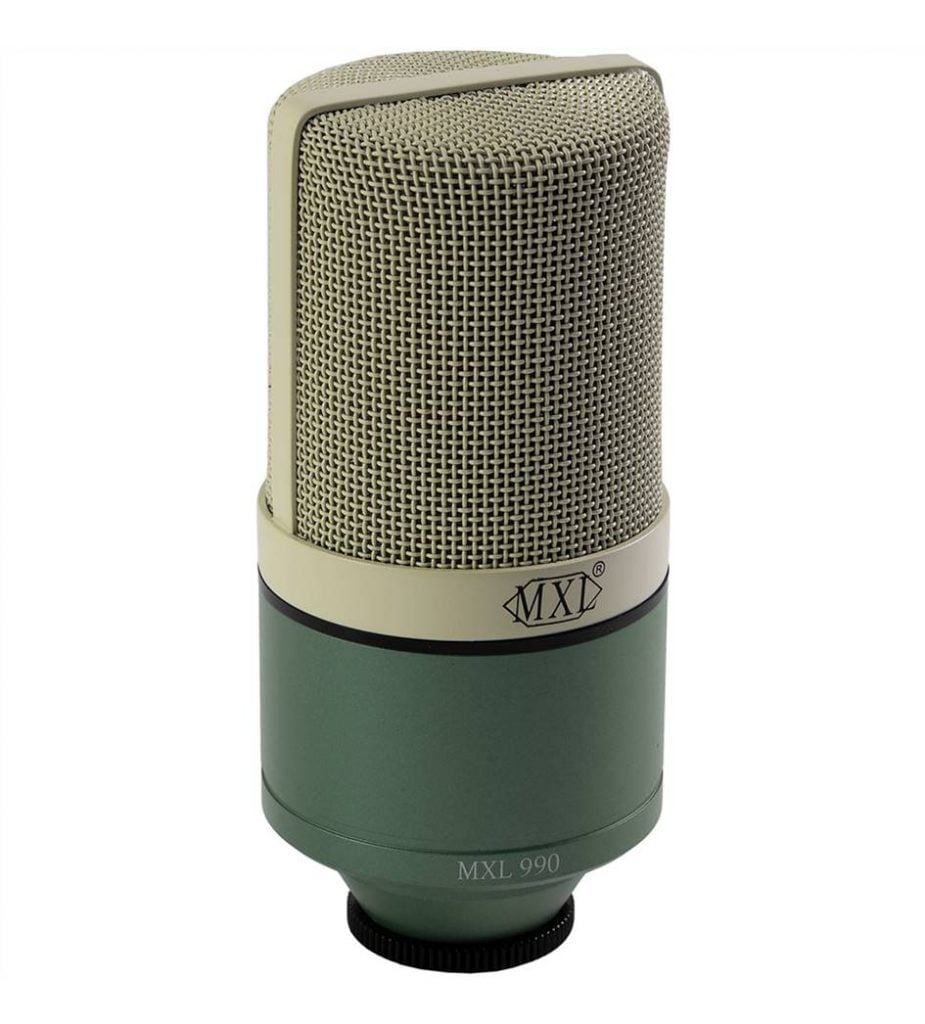
Back in the day, the MXL 990 was often regarded as the “go-to” mic for balanced vocals…
Today, it still remains a classic favorite for those who began their career in audio production decades ago.
Many musicians have “grown-up” together with this trusty mic and still use them until today…
Why? The quality is great for recording vocals and it is available at a reasonable price, which makes it ideal for beginner start-ups and recording studios.
Being a condenser mic, the MXL 990 gets pretty sensitive so you’ll need a pop filter.
It also works straight out of the box by plugging the mic into an audio interface and connect the interface to your laptop via your DAW software.
I really like the vintage body style and champagne finish which gives it a sleek appearance.
If you are looking for a tried and tested vocal condenser that has a sweet high-end, solid lows and full midrange reproduction, this is the mic for you.
Check them out here:
Up next…
9. MXL V67G Condenser Mic
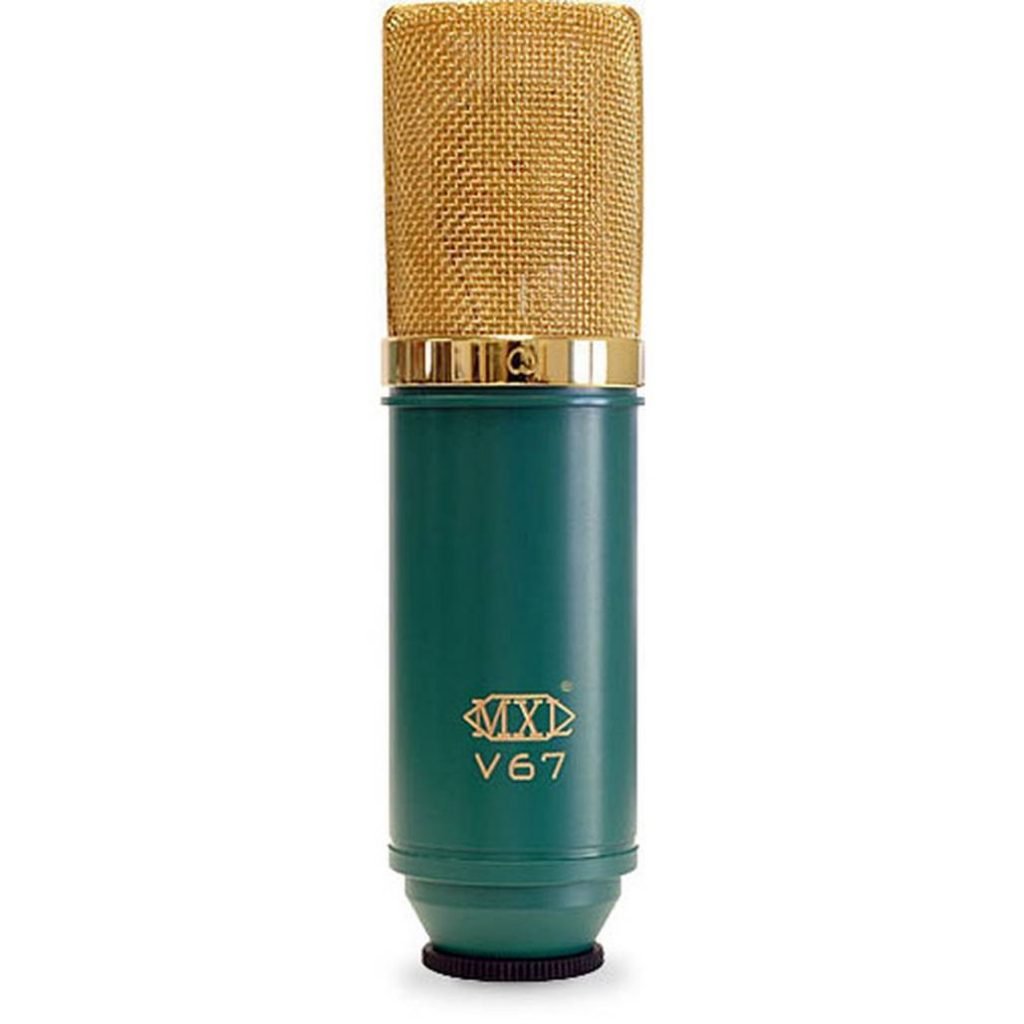
If you are into “old school tube” sounding mics, the MXL V67G has a mellow sound that feels textured and refined.
This is a solid-state mic that adds a layer of warmth into vocals, with rich midrange and crystal clear sound that matches that of tube microphones.
If you are recording vocals, this mic has a rich and clear tone and requires little to no EQ for vocals. The proximity effects adds a good level of depth to the voice without distorting the tone, and without requiring too large of a reduction on the gain.
For home recording studios, the V67G mic requires an XLR cable and phantom power supply together with a decent audio interface. If you are just starting out, the Focusrite Scarlet series interface works well with the MXL V67G.
While this mic is not a Neumann or high-end Sennheiser, it’s very comparable with the AKG P120 and the Shure 58 Beta for recording vocals.
I really like the meticulous design of the mic which gives it a classic old-school vibe. It has a gold-sputtered 6 micron density diaphragm and a solid-state preamp balanced transformer output.
The mic also has a MXL-67 isolation shock mount option if you want to mount it.
Check them out here:
Up next…
10. Audio Technica AT2021 Condenser Mic
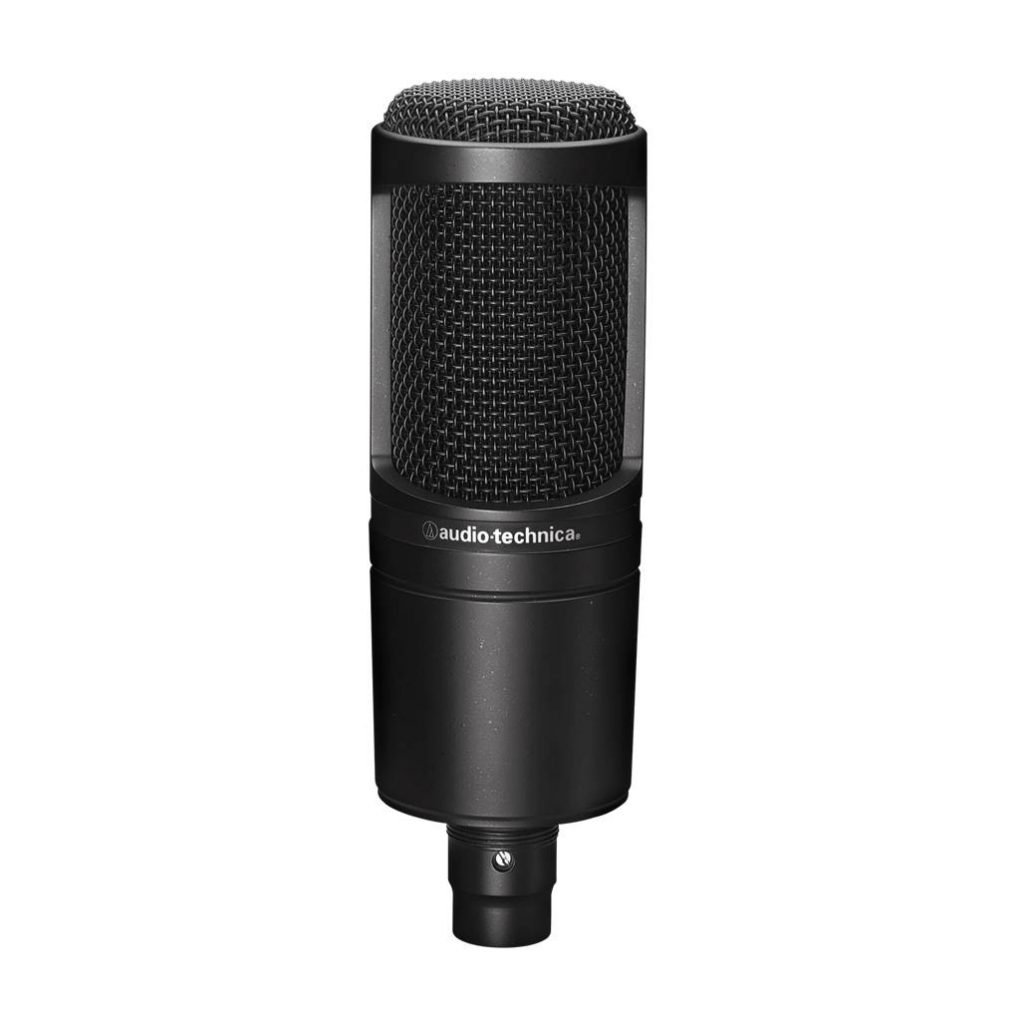
The Audio Technica AT2021 is a small diaphragm condenser that’s great for beginners who want to learn the difference in the sound quality for small diaphragm mic.
It’s the kind of mic that you go to if you want to preserve every single bit of the natural tone, detail and nuance of your voice.
The AT2021 is great for producing studio-quality vocals and high-frequency instruments such as acoustic guitar, piano and group vocals.
It is a very sensitive mic and has a wider and flatter frequency response than the Shure SM57. The mic’s cardioid polar pattern reduces pickup for off-axis and rear sounds, improving overall isolation from the sound source.
This mic in particular excels for high-SPL applications with extended response for smooth and natural sonic characteristics.
It has corrosion resistant contacts from gold-plated XLR connectors and has an overall rugged design for durable performance. It also has superb transient response without any harshness at the high end.
Overall, it’s a solid piece of gear for beginners and I highly recommend checking them out here:
Next Steps
To learn more about recording studio microphones and the types of microphones and their different sound characteristics, be sure to check out this post:
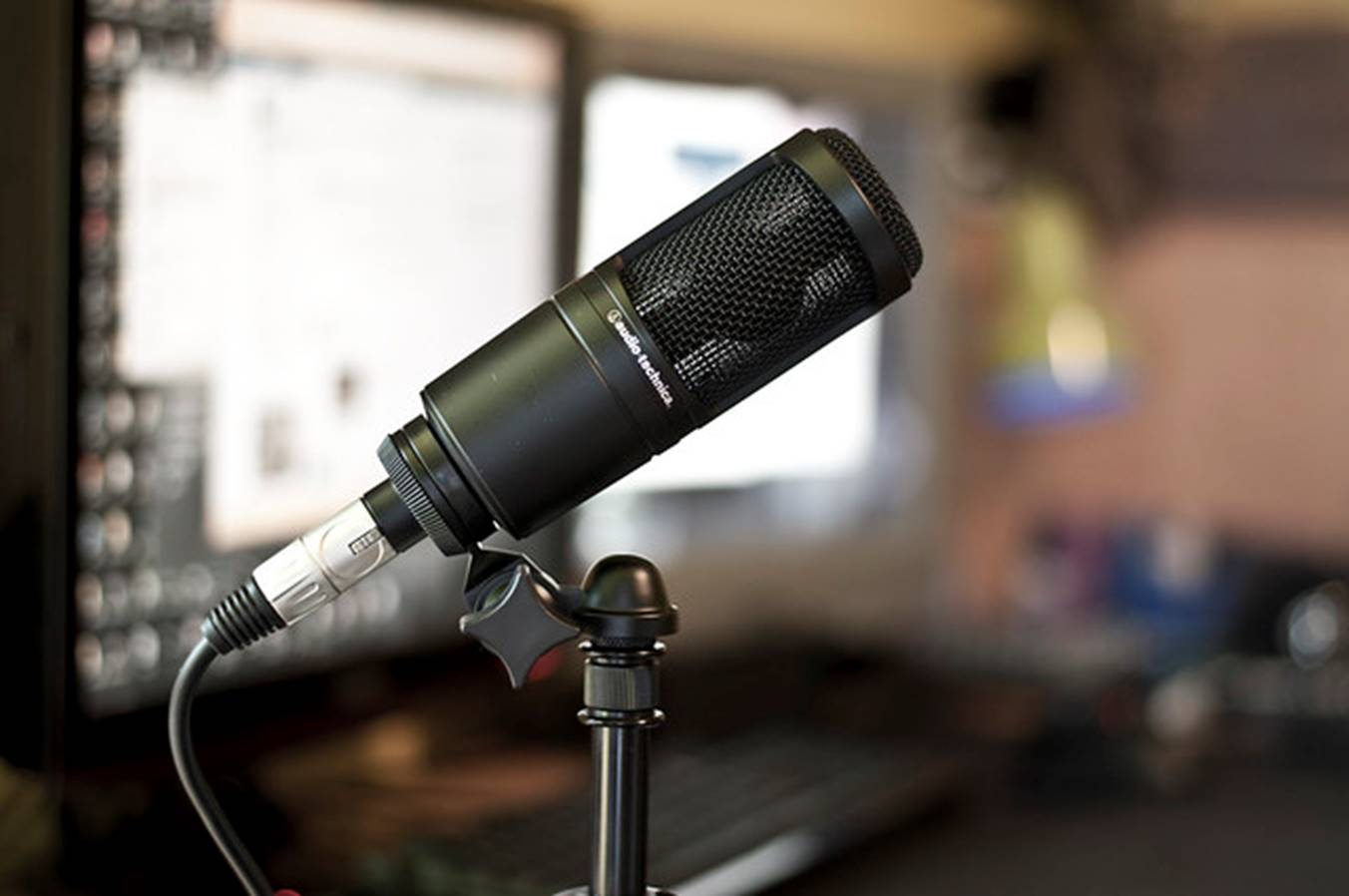
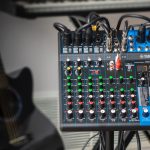
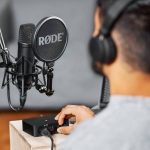
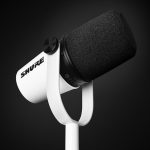
[…] The Best Microphone for Beginners […]